Revolutions

Image of the Attack of 20 June 1792
By the spring of 1792, the Revolution was in crisis on several fronts—in April, war had been declared on the Habsburg Empire, uprisings were taking place in provincial cities, and the Legislative Assembly was increasingly divided over whether to consolidate gains already made or press forward wit

The King Accepting the Constitution amid the National Assembly, 14 September 1791
The Estates–General, reborn as the National Assembly, finished its work by completing a new constitution. This document provided for an executive—the King—as well as a legislative body. Suffrage was male and restricted to certain economic levels.

Entry of the French into Holland
From Berthault’s series of great moments of the Revolution, this engraving depicts the victorious entry of the republican French forces into the southern Netherlands (currently Belgium) on 21 January 1795, where a "sister republic" of Batavia would soon be established.

Costumes of the Council of Five Hundred
In this bicameral legislature, the smaller of the two councils (the Elders with 250 members) had to pass all the legislation, while the Five Hundred could initiate legislation. The revolutionaries decided on the division of authority.
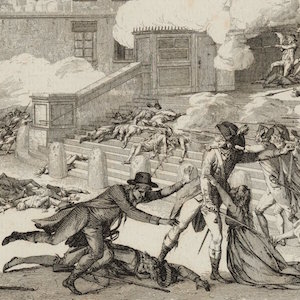
Day of 13 Vendemaire of the Year 4
In the waning days of the Convention in the fall of 1795, royalist–influenced sections of Paris revolted to prevent the adoption of a new constitution that protected the position of the radicals. Bonaparte was delegated to put down the uprising of 5 October 1795 (13 Vendémiaire Year IV).
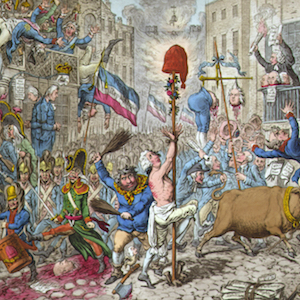
Promised Horrors of the French Invasion
This highly sophisticated political cartoon by the noted engraver James Gillray from October 1796 responds to Edmund Burke’s pamphlet, "Reflections on a Regicide Peace." This image argues against further war with France to avoid bankrupting the British treasury and exposing England itself to inva
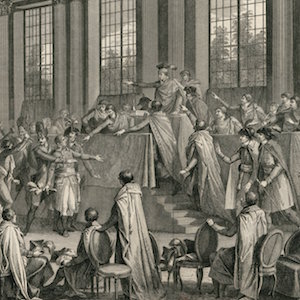
Day of Saint-Cloud
The problems of the revolutionary government had so intensified that the two leaders, Abbé Sieyès and Roger Ducos, plotted to overthrow it with the help of the most famous military man of the day. But the legislative body, particularly the lower house, proved resistant.
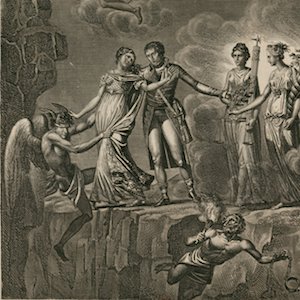
The Saving of France
In this propagandistic allegorical engraving, Napoleon saves the female figure of France from the abyss to which she has been led by "revolutionary fanaticism." The figure of fanaticism is armed to the teeth with "the daggers of party spirit" and holds in one hand the chains of slavery and in the

Toussaint L’Ouverture
A slave inspired by the French Revolution’s egalitarianism, Toussaint saw himself as French and struggled for French control of the island of Saint Domingue. Nonetheless, he had no intention of letting whites rule, for he wanted blacks to control their own destinies.
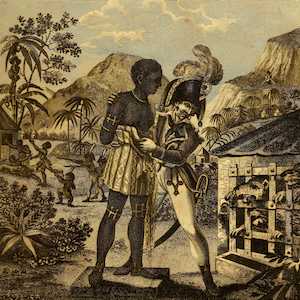
The Mode of Training Blood Hounds in St. Domingo
This image reveals grotesque mistreatment of blacks even during training exercises. Here a French cavalryman (chasseur) plans to use someone as a live prey for hunting dogs.